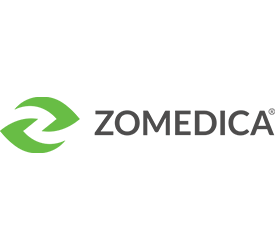Therapy
Left untreated, FHT will eventually be fatal. Hyperthyroidism affects multiple organ systems. Until FHT is corrected, management and assessment of comorbidities cannot be accurately assessed. Options for treatment include radioactive iodine, oral antithyroid medication, surgical removal of the adenomatous thyroid gland, and an iodine-deficient therapeutic diet. The treatment of choice is radioactive iodine (131I), which will provide a cure in more than 95% of cases. Radioactive iodine avoids anesthesia, requires no ongoing medication administration, and does not require the cat to have a restrictive diet. Radioactive iodine may be used as an initial treatment for stable hyperthyroid cats, even in the presence of some concurrent diseases. Cats with elevated N-terminal pro-B-type natriuretic peptide levels and mild heart disease will likely benefit from having the hyperthyroid state corrected. Cats with mild renal changes (IRIS stage 1) can also be treated with 131I without a therapeutic medication trial first.2 Note that cats with normal renal and symmetric dimethylarginine values may develop abnormalities after the hyperthyroidism is corrected, and a normal symmetric dimethylarginine cannot be used to predict renal function after hyperthyroid resolution.71 Iatrogenic hypothyroidism is a risk of 131I, so ensuring the TSH concentration is nondetectable before referral may be ideal.70
Unfortunately, radioactive iodine treatment may not be available to all practitioners. Thyroidectomy may be curative, but it includes the risk of anesthetizing a cat with potential cardiac compromise. The parathyroid glands are at risk of being damaged during thyroidectomy even by skilled surgeons. Infrequently, there may be ectopic thyroid tissue that is not easily surgically removed that will continue to be overactive. Before surgical intervention, the cat should be medically stabilized.
An iodine-deficient diet is commercially available by prescription and is effective for many cats in controlling hyperthyroidism. Depending on the degree of initial elevation of the T4 level, some cats may take several months to become regulated.72 For the therapeutic diet to be effective, cats must not be allowed access to any other food, including other pets’ foods and human food, as well as items that they may hunt and eat outdoors. In some cats, the T4 level will fail to normalize even after prolonged periods of exclusively feeding the restrictive diet. It has been shown that feeding the iodine-deficient diet to nonhyperthyroid cats in the household is not harmful if it is not possible for owners to feed separate diets in multicat homes.72
Medical management with methimazole is a common and effective way of controlling hyperthyroidism. To minimize potential adverse effects, methimazole should be started at a low dose and titrated up to the dose needed to maintain T4 levels between 1.0 and 2.5 mcg/dL. Dosing of 1.25–2.5 mg every 24 hr for the first week of treatment, increasing to 2.5–5 mg every 12–24 hr, will help minimize side effects, although adverse effects including vomiting, bone marrow dyscrasias, and skin excoriations can occur up to several months after initiating therapy. Gastrointestinal side effects may be mitigated by using a transdermal preparation of methimazole; however, all other adverse drug effects require discontinuation and selection of a different treatment method. Methimazole doses will need to be adjusted over time because the drug does not affect the growth of the adenomatous hyperplasia. Avoidance of hypothyroidism is imperative and requires periodic veterinary monitoring.
Clinical Tips
- For many practitioners, it has become commonplace for pet owners to do their own research when a diagnosis is made and subsequently propose alternative therapies. For cats with FHT, there is no effective homeopathic remedy despite the availability of products claiming to be effective.73 Clients should be advised to pursue traditional treatments for this disease.
- If initial regulation is with methimazole, T4 monitoring should occur every 2–4 wk until the goal levels are reached. Complete blood count, chemistry profiles, and urinalysis will provide information on potential bone marrow dyscrasias, development or progression of azotemia, resolution of any liver enzyme changes, and any other issues that may have been concealed by the hyperthyroid state.
- Blood samples for T4 measurement may be taken at any time during the day after methimazole administration. There is no need to schedule sampling for a specific time after medication administration.68
- Once the patient has been regulated, a physical examination and minimum database should be performed at least every 6 mo and more frequently if there are significant comorbidities.








